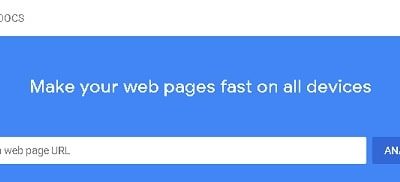Tips for Writing Better Website Copy
“If you think it’s expensive to hire a professional to do the job, wait until you hire an amateur.” – Red Adair
Use Your Brand’s Voice, Not Yours.
The most common objection to our website copywriting services mostly comes from entrepreneurs who are in the start-up phase of their first business. Ninety percent of the time, when we offer to write their copy for them, they reply back with, “I really want the copy to written in my voice. So, I think I’ll write it myself.” And then they ask if we would be so kind to check the copy afterwards to make sure “it sounds good.”
A month later, they ask us to review the copy they wrote. One hundred percent of the time, they wrote the copy in their voice – objective completed. Unfortunately, the copy is almost never written in a way that is going to generate more leads, or lead to more sales for the business.
Make it all about your customer.
We almost called it a “secret” but let’s be honest; it’s not a secret anymore. There are numerous books written on the concept of great copywriting and how you can write copy that’ll summon birds out of the trees with that beautiful voice of yours.
In every book written on the topic, you’ll find one piece of advice that every copywriter agrees on. It’s the same advice that all top-performing salespeople follow. Great marketers also adhere to this advice. Here it is: “Make it all about them.”
That’s who your copy should be about. Not you, not your company, and not your competitors. It doesn’t matter what you sell or who you sell to, your copy is going to be consumed by a human being who wants to know what’s in it for them.
Write copy in your customer’s voice, not yours.
When you write your copy, you must build rapport with the customer by addressing their wants, needs, deepest desires, fears, objections, and their current state of mind. To do this effectively, you need to understand who your customers are, where they’re at in the sales funnel when they read your copy, and what’s going on inside their head (mental chatter, expectations, mood, etc…). Writing copy for people who are fed up with their current provider is going to be totally different than the copy you would write for a customer who is buying the product or service you’re selling for the first time.
If you want to write copy that makes people feel as though they are deciding to contact you or buy from you ON THEIR OWN FREE WILL, then write in their voice.
“People aren’t interested in you. They are interested in themselves.” – Dale Carnegie
Your customers care about their having their needs met, their problems solved, their fears eliminated, and their desires satisfied.
Nobody cares about your solution until they know you care about their problem.
The best thing you can do to improve your copy is to remove “I, me, my, we, us, and our” from it and rephrase those sentences to use the words, “you, your, yourself, and yours.” For example: change “I want to tell you something” to “Here’s something you need to know.”
Even if your brand is a personal brand and people are interested in you, you can write better copy by addressing their problems and selling them on what life will be like when they take you up on your offer, making it all about you.
It’s okay to include a few “I, me, my, we, us, or our” statements – nobody is going to persecute you for it and chances are; your customers will overlook it. But! If you intend to write better copy, I hereby challenge you to do so without mentioning you or your company on your home page or service/product pages.
If your website has an About Us page break this rule and make it all about you. Afterall, when someone visits your about page, their intention is to learn more about you and your company, so give them what they want!
Know where your customers are in the buying process.
You must understand where your potential customers are at in the sales funnel. Are they searching for information? Are they interested in learning more about your products or services? Are they considering buying from you? Are they price shopping and comparing features offered by your competitors? Are they ready to buy now?
Your copy needs to meet them where they are and then build a bridge to get them to the next logical step. It’s unrealistic to expect to take someone from the research phase to the purchasing stage, without first taking them through the consideration stage. This may seem like a foreign language to some of you (all these stages and phases).
When it’s time to start writing your website’s copy, you should have a good idea of where people are in the buying journey when they visit your home page, then your service or product page, then your contact or order page, then your confirmation page.
One of the biggest mistakes owners/copywriters make is they try to sell people way too soon! Before the buyer has a strong enough desire to buy now or speak with a representative, they get bombarded with “buy this”, “buy that”, “buy now”, and “buy here” buttons and call to actions.
One time I saw a web page that had over 20 “buy now” buttons on it. I read each one out loud and I must admit it was humorous reading them back-to-back (exactly as they appeared on the page). But it was a huge turnoff because it reeked of desperation and selfishness.
Tip: conversate with your readers and stop applying the pressure to buy during the first 5 minutes of meeting them.
You must also know What people don’t buy:
People don’t buy what they need, they buy what they want. So, sell them what they want and include what they need.
People don’t buy features, they buy benefits. For example, when someone wants to build a deck on their house, what they really want is a place where they can sit outside and enjoy the nice weather. They don’t want the deck; they want the experiences that come from having a deck and they believe that having a deck will provide them with what they really want.
A feature is what something is.
A benefit is what something does for you.
A simple formula you can use to describe your product or service’s features:
When breaking down features tell them, “It _______, so you can ______, which means ______.”
Questions to ask about your product or service before you start writing:
1. What are 3 ways my product or service will help my customers make money?
2. How can my product or service help my customers save money over the next week, month, or year?
3. How much time can my product or service save my customer and what could they do with that time?
4. What is something my customers will not have to do anymore once they buy my product or service?
What physical pain does my product or service eliminate for my customers and what does that mean to them?
6. How does my product or service eliminate mental pain or worry for my customers?
7. What are 3 ways my product or service can help my customers feel more comfortable?
8. How does my product or service help my customers feel healthier?
9. How will buying my product or service help my customers increase their social status?
Take the answers to those questions and incorporate them in your copy.
Other Great Copywriting Tips:
1. It all starts with a great headline at the top!
“If your prospect is aware of your product and has realized that it can satisfy this desire, your headline starts with the product. If the prospect is not aware of your product but only has the desire itself, your headline starts with the desire. If the prospect is not yet aware of what he really seeks but is concerned with the general problem, your headline starts with the problem and crystallizes into a specific need.” – Eugene Schwartz
2. Stop trying to sound SUPER-smart.
Stop trying to prove to people how smart you are by using big words, industry jargon, or acronyms you don’t explain. Prove how smart you are by communicating with them in a way they can understand. There’s a saying all great marketers and salespeople should know by-heart and it is: “You will lose if you confuse, because a confused mind never buys.”
How do you know if your copy is good or bad?
After you write your copy and think you have a finalized version of gloriousness on your hands, ask yourself these questions:
1. Is everything about the customer?
2. Did I say, “you” way more than “I”, “we”, “us”, or “our”?
3. Am I imposing my will, or am I conversating with them?
4. Did I use big words and industry jargon my customers don’t say?
5. Did I spend time trying to make myself seem smart, or did I spend time making them feel smart?
6. Did I address their problems, fears, and objections, or did I just tell them about the solutions?
7. Would I buy what I’m trying to sell?
8. Does this copy make the reader feel the way I want them to feel after reading it?
9. Is this copy written in my voice or my customer’s voice?
10. Did I tap into my customer’s emotional state and reasons for buying?
You’ll know your copy is good when it feels like the best copy you’ve ever read, not written.
Before you highlight all your text and click the delete key on your keyboard, you may want to go ahead and publish your copy. There’s a saying that we like, and it goes, “It will never be perfect, but it can always be improved.” There’s only one way to know if your copy is good (enough) or bad, and that’s by testing it. Put it out there and see what happens!
If a lot of people visit your website but don’t make a purchase or contact you about your services, it’s because the copy didn’t connect with them.
If you’re going to edit your published copy, make one small tweak, and then publish it. Sometimes rewording one of your headlines or one of your call-to-action buttons can make a huge difference in the results you see. If you edit chunks of your copy after it’s published, you’ll never know exactly what the problem was. So do what the scientists do and only test one variable at a time.
Don’t expect to write the perfect copy after reading this article.
Our copywriters have years of experience, and they still have room to grow. They’ve read numerous books on the subject of copywriting and writing, in general and they still aren’t satisfied with their first drafts. If you are serious about writing your own website copy and have the time and determination to learn how to write great copy, we recommend that you read books, take lots of notes, and study other copywriters’ work. We also recommend reading a few books on psychology and human nature to get a deeper understanding of how and why people do the things they do.
Here’s a list of books every great copywriter should read at least once:
1. Seducing Strangers, by Josh Weltman.
2. Scientific Advertising, by Claude Hopkins.
3. Tested Advertising Methods, by John Caples.
4. Breakthrough Advertising, by Eugene Schwartz.
5. Advertising Secrets of the Written Word, by Joe Sugarman.
6. Copywriting Secrets, by Jim Edwards.
7. On Writing: A Memoir of the Craft, by Stephen King.
8. On Writing Well, by William Zinsser.
9. The Laws of Human Nature, by Robert Greene.
Chris Morgenroth is your guide to mastering the art of digital marketing. Based in the charming city of Richmond, Virginia, Chris brings over 15 years of hands-on expertise in propelling small businesses to new heights by attracting and retaining clients. He’s also passionate about weaving creativity and strategy to unlock the true potential of online business promotion. Join Chris on a journey of discovery as he shares invaluable insights and proven techniques to navigate the dynamic world of digital marketing. Connect with Chris on Linkedin.
Get More Tips and Secrets Sent to Your Inbox!
Recent Articles:
Want to learn more about digital marketing and find a few tips to help you along your way?
Is it Wrong to Get Web Design Ideas From Other Websites?
Is it wrong to get web design ideas from other websites? Understanding Web Design Ethics: Copyright, Creativity, and More... In the digital world, the internet is like a big place where ideas and information move around easily. But is it okay to get ideas from other...
Should You Use Squarespace or WordPress?
Should You Use Squarespace or WordPress? Which One's Right for You? Building Your Presence Online Today. In today's digital world, having a website is really important. Whether you're a person, a business, or someone creative, having a website matters. But with many...
How to Get Images to Load Faster on Your Website
How to get images to load faster on your websiteImage Optimization Steps:Everyone loves a website that loads fast and makes their user experience a good one. Google’s search engine also loves fast loading websites and considers website speed an SEO ranking factor. If...
How Websites Work (in plain English)
How Do Websites Work?Here’s How Websites Work:We have narrowed it down to four steps. Ask any techie and they will tell you there are far more than four things that need to happen for you to access a website. And they’re right. But for the sake of making this as user...




